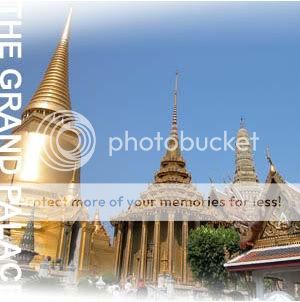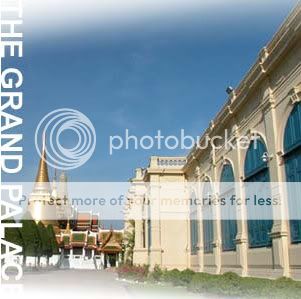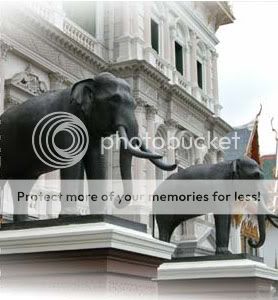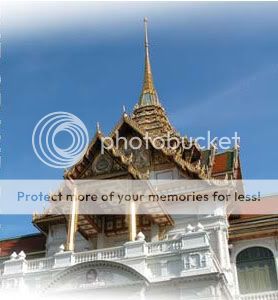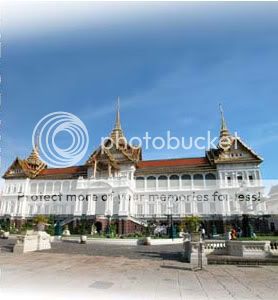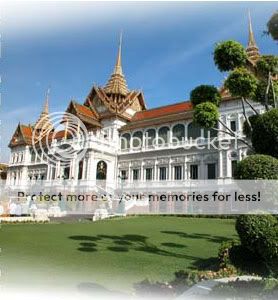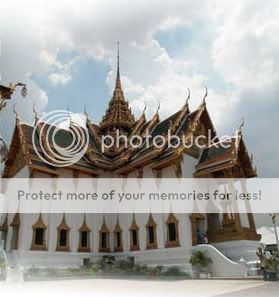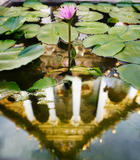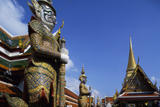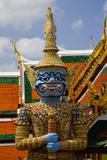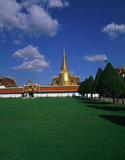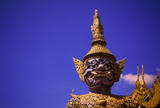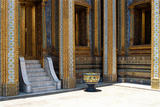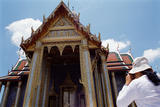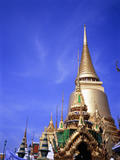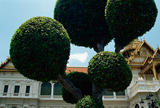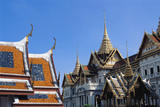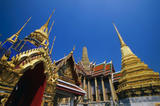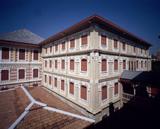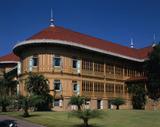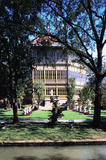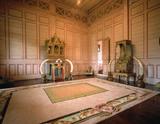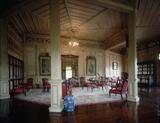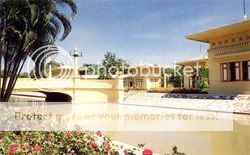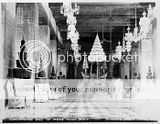Chitralada Villa
This is the current residence of King Bhumibol Adulyadej & Queen Sirikit. There aren't that many photos of Chitralada as it is a very enclosed & private royal residence. You can find out more about it here :
http://en.wikipedia.org/wiki/Chitralada_Palace
Chitralada Villa was built in 1913 in the reign of King Vajiravudh (Rama VI), who used it as his private place for writing. Today, the villa, which is part of Dusit Palace in Dusit District of Bangkok, is the official residence of His Majesty King Bhumibol Adulyadej. It covers an area of 395 rai, or 158 acres. A simple three-story structure in a rectangular form, the villa is in the Western architectural style and it is surrounded by a moat in all four sides, with the yellow maharaj (a symbol of the King) flag displayed on top.
His Majesty the King has devoted some areas in the villa compound to his experimental projects in agriculture. This eventually formed the basis of the world's first experimental farm based within a royal residence, whose windmills and farming implements are visible to all who drive past. Successful results of his experiments have been disseminated to his subjects to translate them into action. These projects include rice farming, dairy cow raising, fish farming, and forestry demonstrations.
The villa is also the location of the SUPPORT Center, established by Her Majesty the Queen, who had an occupational training project carried out there since 1979. The SUPPORT Center provides training for SUPPORT members in various branches of craftsmanship. It has become a center for beautiful SUPPORT products made by villagers across the country.
Klai Kangwon Palace
King Prajadhipok (Rama VII) constructed Klai Kangwon Palace in Prachuap Khiri Khan Province for Queen Rambhai Barni to stay in summer. Construction work began in October 1926 and was completed in 1933.
Within Klai Kangwon are four major buildings; all of them are decorated in the Mediterranean architectural style, the form of which is adapted to the Thai style. The most important building is Piumsuk, which is the royal residence of Their Majesties the King and Queen. Literally meaning "far from worries," Klai Kangwon was a favorite residence for King Prajadhipok and Queen Rambhai Barni, who spent a certain period there each year. It is also a favorite residence for the present monarch, His Majesty King Bhumibol Adulyadej, who now spends most of his time at this palace. Klai Kangwon covers an area of more than 300 rai (120 acres).
Bang Pa-In Palace
The Royal Palace at Bang Pa-In has a history dating back to the 17 th century. According to a chronicle of Ayutthaya, King Prasat Thong (1629-1656) had a palace constructed on Bang Pa-In Island in the Chao Phraya River. A contemporary Dutch merchant, Jeremias van Vliet, reported that King Prasat Thong was an illegitimate son of King Ekathotsarot (1605-1610/11), who in his youth was shipwrecked on that island and had son by a woman who befriended him. The boy grew up to become the Chief Minister. After having usurped the throne, he became known as King Prasat Thong. The King founded a monastery, Wat Chumphon Nikayaram, on the land belonging to his mother on Bang Pa-In Island, and then had a pond dug and a palace built to the south of that monastery. The chronicle records the name of only one building, the Aisawan Thiphaya-art Royal Residence, which was constructed in 1632, the year of the birth of his son, the future King Narai (1656-1688). It is not known whether or not the palace was in use till the fall of Ayutthaya in 1767. However by 1807, when the Kingdom's best known poet, Sunthon Phu, sailed past Bang Pa-In, only a memory of the palace remained, for the site was neglected and overgrown.
The palace was revived by King Rama IV of the Chakri Dynasty, better known in the West as King Mongkut (1851-1868), who had a temporary residence constructed on the outer island that became the site of the Neo-Gothic style monastery, Wat Niwet Thamprawat, which was built by his son and heir, King Chulalongkorn (Rama V).
The present-day royal palace dates from the reign of King Chulalongkorn (1868-1910), when most of the buildings standing today were constructed between 1872-1889.
Today the palace is used occasionally by Their Majesties King Bhumibol Adulyadej (Rama IX) and Queen Sirikit as a residence and for holding receptions and banquets.


